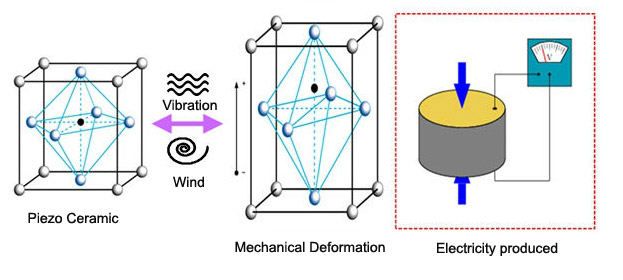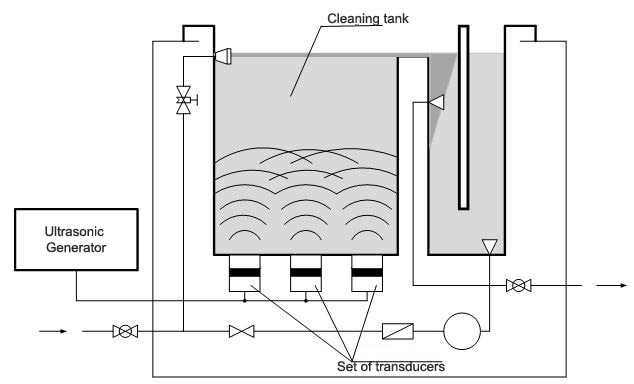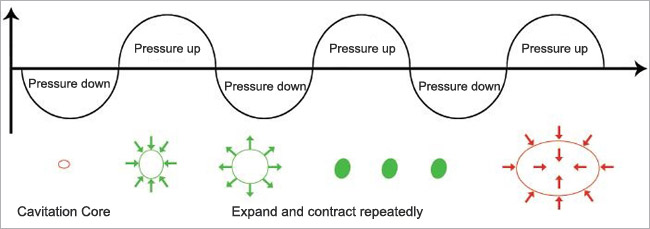Mechanical energy is converted to electrical energy through piezoelectric materials.
The piezoelectric effect is understood as the linear electromechanical interaction between the mechanical and the electrical state in crystalline materials. The first demonstration of the direct piezoelectric effect was in 1880 by the brothers Pierre Curie and Jacques Curie. For the next few decades, piezoelectricity remained something of a laboratory curiosity. The first practical application for piezoelectric devices was sonar, first developed during World War I. And that created intense development interest in piezoelectric devices. Over the next few decades, new piezoelectric materials and new applications for those materials were explored and developed. During World War II, a new class of synthetic materials was discovered, which exhibited piezoelectric constants many times higher than natural materials. This led to intense research to develop electric-sound transforming devices.
Piezoelectric Effect:
Piezoelectricity is the electric charge that accumulates in certain solid materials in response to applied mechanical stress. And piezoelectric effect is the process during which such electricity is derived from pressure

So the electric energy can be derived from and transformed to mechanical oscillation.
A Converter is such a device that transforms electric energy and mechanical energy into each other.

Applications
Lighter

Ultrasonic Cleaner


